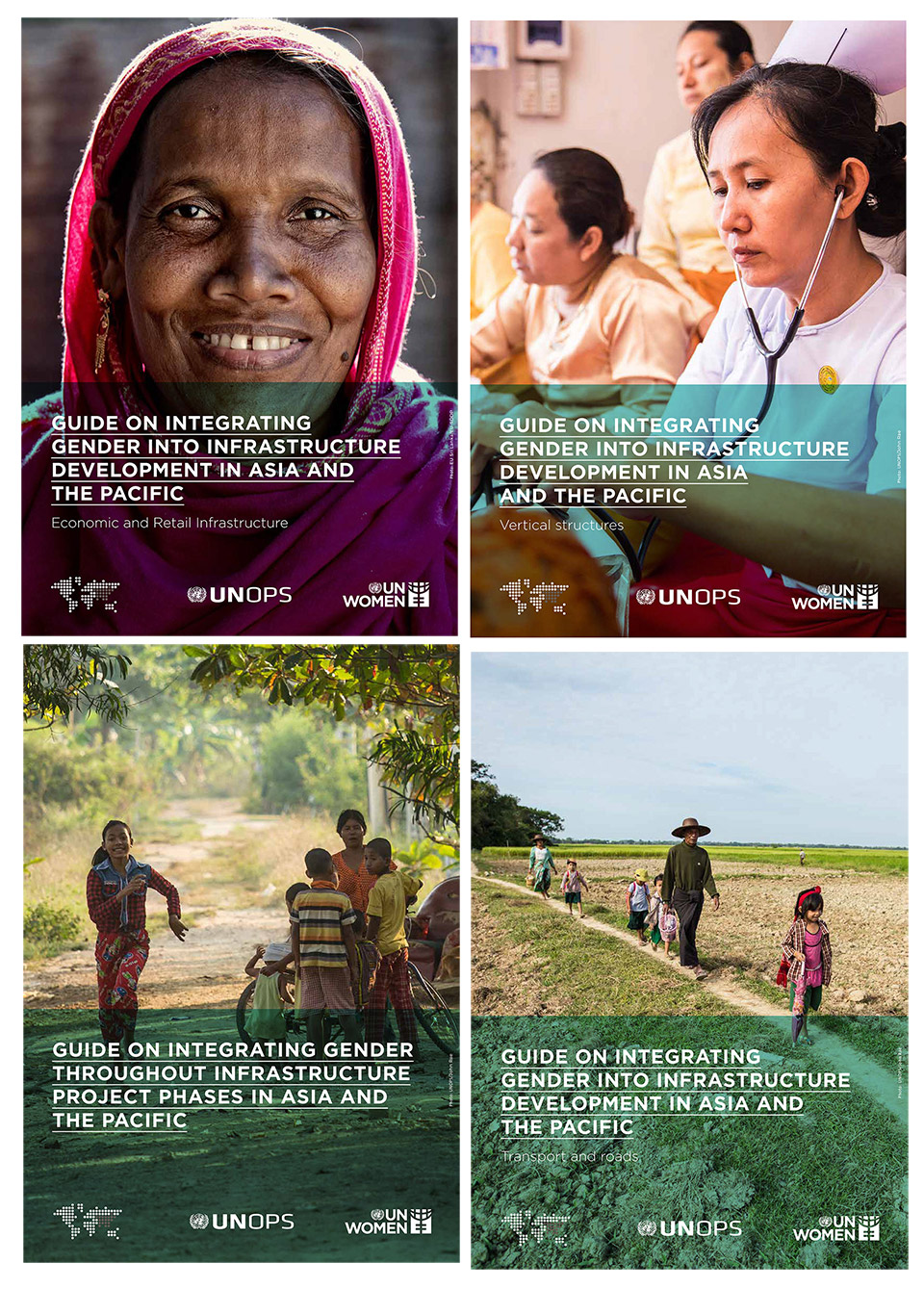
Guides on integrating gender into infrastructure development in Asia and the Pacific

Gender mainstreaming helps us to ensure that infrastructure is designed and built to maximize positive and equitable benefits – such as income- generating opportunities and access – while mitigating risks and threats. Each stage of the infrastructure project must address the safety and accessibility needs of all users, including women, elderly, children, lesbian, gay, transgender, queer, and intersex, people living with disabilities, and other socially-excluded groups. Gender mainstreaming considers the diverse needs of women and other populations in various roles including as active stakeholders, employees, entrepreneurs, contractors, decision- makers as well as the end users of infrastructure. The design of infrastructure must take into consideration how women, men, girls, and boys access and use it, as well as identify opportunities to empower and transform individual lives and communities.
Asia and the Pacific is one of the world’s most rapidly growing regions in terms of economic growth and population. The region requires efficient, well-built, and well-maintained infrastructure to foster inclusive growth for all people and ensure that the dividends of economic growth are equitably shared.
This practical series, jointly commissioned by UNOPS and UN Women, provides specific ‘how-to’ guidance together with checklists for ease of application, with context-specific Asia and Pacific regional information and case studies to showcase what socially-inclusive and gender-equitable infrastructure designs look like in reality. Each thematic guide should be used in tandem with the companion Guide on Integrating Gender throughout Infrastructure Project Phases in Asia and the Pacific, which provides overarching guidance and tools to mainstream gender throughout each project phase.